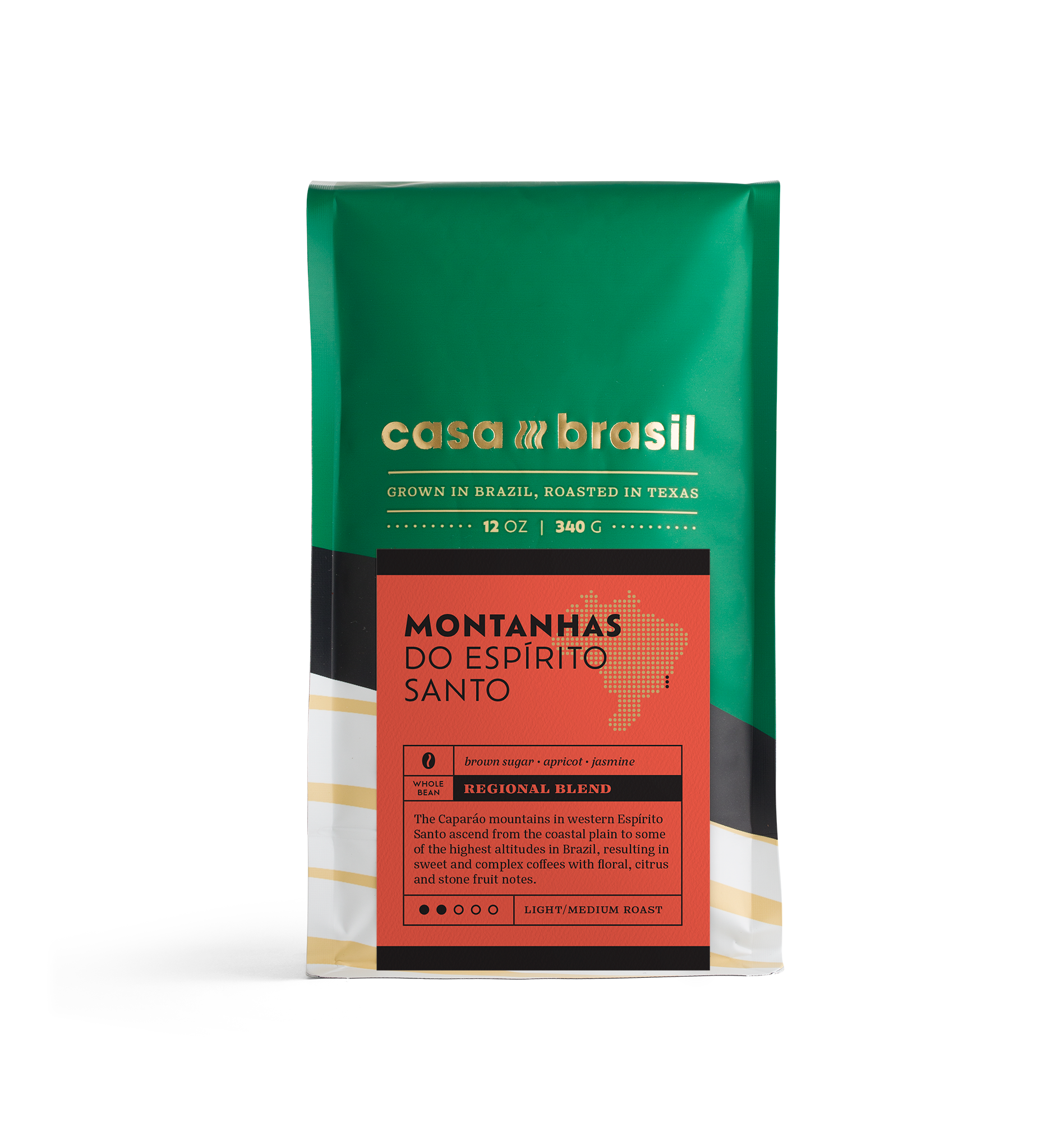montanhas do Espírito Santo
Espírito Santo has long been known for its coffee production, which was the principal economic activity of the state for over a century until the 1950s. Even in second place (behind Minas Gerais), the state accounts for around 30% of Brazil’s total production. Most of this—around 80%—is Conilon, a type of Canephora that originated from the Kouilou River Basin in the Republic of Congo and was introduced into southern Espírito Santo in 1912. From there it expanded north across the coastal plain and foothills.
Great coffees from Montanhas do Espírito Santo are complex, with floral fragrance, complex stone fruit and citric flavors, and a long, sweet aftertaste.
Arabica production is largely centered in the Caparáo mountains in western Espírito Santo, which, lined by the Atlantic Forest, rise from the coastal plain to create some of Brazil’s highest altitudes and most complex coffees. The mountains reach their apex along the border with Minas Gerais, with the highest peak, Pico da Bandeira, reaching 2,892 masl. As the coastal air scales the mountain, it cools and contracts, resulting in higher precipitation on the Espírito Santo side, while the leeward side, largely in Minas Gerais, hosts a dryer climate. Given the abundant rainfall and cooler temperatures, quality-driven Arabica growers in Espírito Santo have turned to pulped natural processing, in which the outer layer of the fruit is removed before drying, thus facilitating moisture removal and mitigating risk





